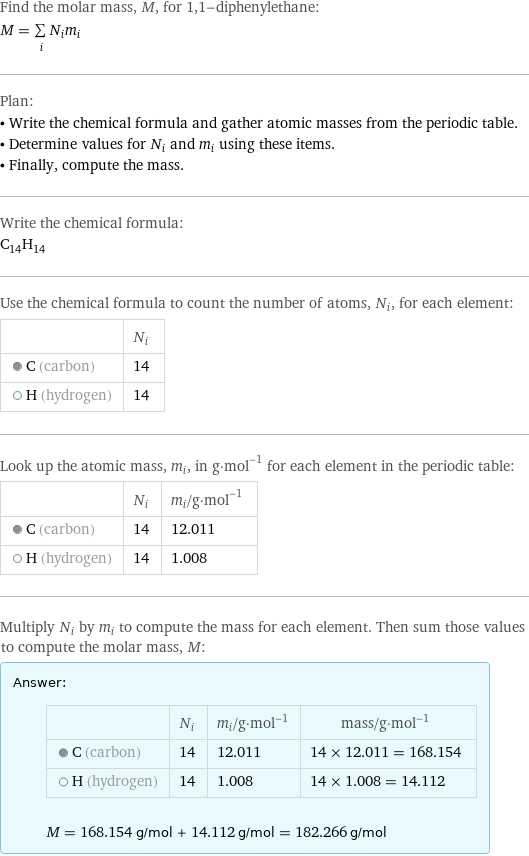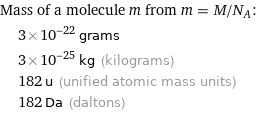Input interpretation

1, 1-diphenylethane | molar mass
Result

Find the molar mass, M, for 1, 1-diphenylethane: M = sum _iN_im_i Plan: • Write the chemical formula and gather atomic masses from the periodic table. • Determine values for N_i and m_i using these items. • Finally, compute the mass. Write the chemical formula: C_14H_14 Use the chemical formula to count the number of atoms, N_i, for each element: | N_i C (carbon) | 14 H (hydrogen) | 14 Look up the atomic mass, m_i, in g·mol^(-1) for each element in the periodic table: | N_i | m_i/g·mol^(-1) C (carbon) | 14 | 12.011 H (hydrogen) | 14 | 1.008 Multiply N_i by m_i to compute the mass for each element. Then sum those values to compute the molar mass, M: Answer: | | | N_i | m_i/g·mol^(-1) | mass/g·mol^(-1) C (carbon) | 14 | 12.011 | 14 × 12.011 = 168.154 H (hydrogen) | 14 | 1.008 | 14 × 1.008 = 14.112 M = 168.154 g/mol + 14.112 g/mol = 182.266 g/mol
Unit conversion

0.18227 kg/mol (kilograms per mole)
Comparisons

≈ 0.25 × molar mass of fullerene ( ≈ 721 g/mol )

≈ 0.94 × molar mass of caffeine ( ≈ 194 g/mol )

≈ 3.1 × molar mass of sodium chloride ( ≈ 58 g/mol )
Corresponding quantities

Mass of a molecule m from m = M/N_A: | 3×10^-22 grams | 3×10^-25 kg (kilograms) | 182 u (unified atomic mass units) | 182 Da (daltons)

Relative molecular mass M_r from M_r = M_u/M: | 182